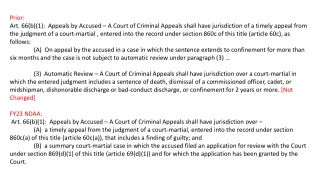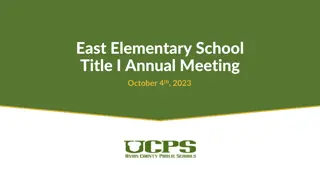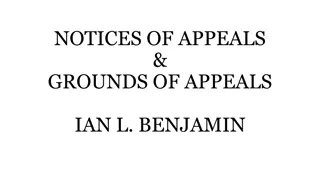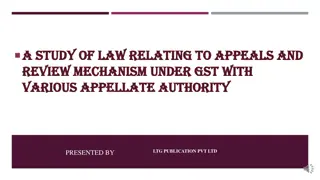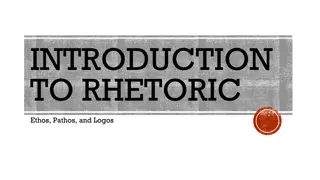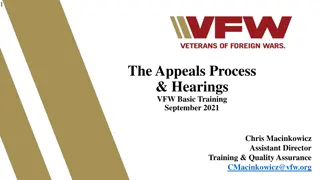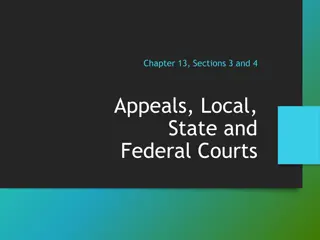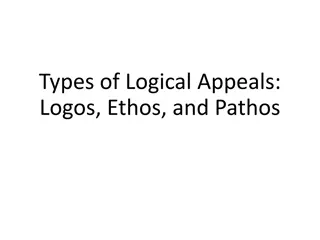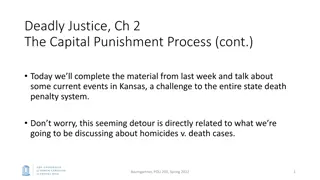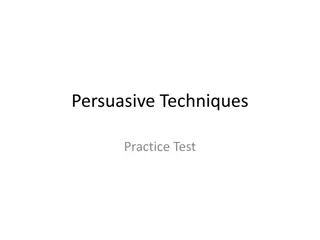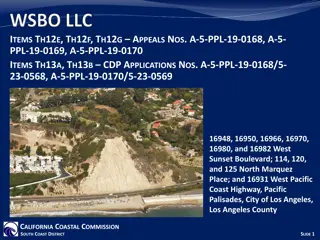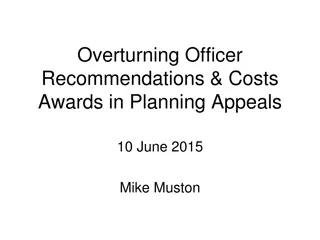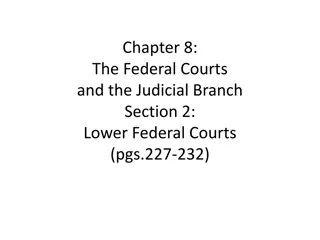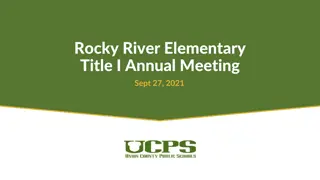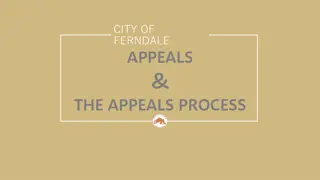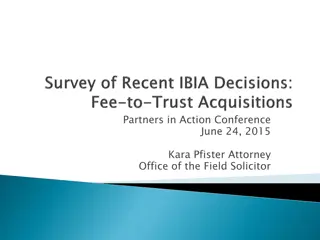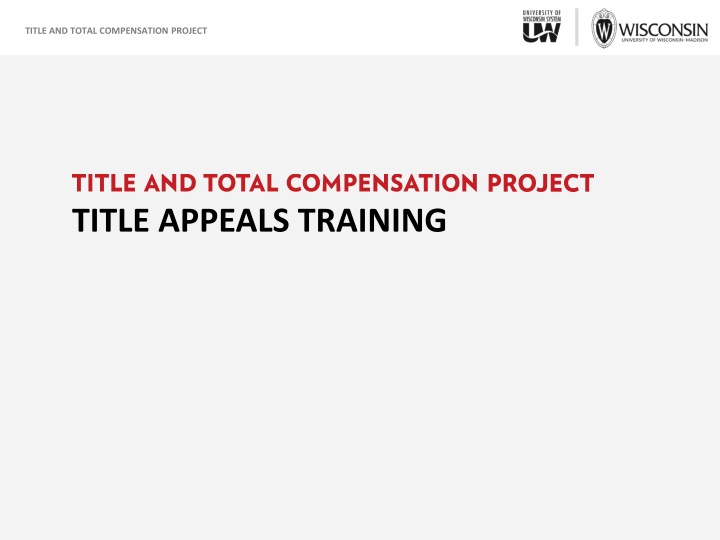
Effective Strategies for Job Title Standardization and Compensation Alignment
"Learn how aligning job titles and standardizing job descriptions can enhance organizational clarity, compliance, and talent management. Discover best practices for creating clear, consistent, and market-relevant job descriptions. Improve equity, recruitment, and overall compensation strategy."
Download Presentation

Please find below an Image/Link to download the presentation.
The content on the website is provided AS IS for your information and personal use only. It may not be sold, licensed, or shared on other websites without obtaining consent from the author. If you encounter any issues during the download, it is possible that the publisher has removed the file from their server.
You are allowed to download the files provided on this website for personal or commercial use, subject to the condition that they are used lawfully. All files are the property of their respective owners.
The content on the website is provided AS IS for your information and personal use only. It may not be sold, licensed, or shared on other websites without obtaining consent from the author.
E N D
Presentation Transcript
TITLE AND TOTAL COMPENSATION PROJECT TITLE APPEALS TRAINING
TITLE AND TOTAL COMPENSATION PROJECT Agenda 1. Job Titles 2. Best Fit 3. Putting It Into Practice 4. The Ask Role of a Panel Member Standard of Review 5. Getting Started 6. Additional Considerations Standard Job Descriptions Title Sets/Levels FLSA Supervision Organizational Structure This icon indicates the page number in the participant guide. Pg. X 1
TITLE AND TOTAL COMPENSATION PROJECT Job titles have multiple purposes: Functional Convey roles and responsibilities clearly. Clarify scope of authority and accountability. Reflect organization structure. Align with job levels, compensation and talent programs. Facilitate clear and consistent market benchmarking of similar roles and responsibilities. Facilitate recruitment and career progression. Legal Support compliance with laws and regulations including pay equity, EEO regulations, FLSA and OFCCP requirements. Personal Reflect experience/proficiency level achieved. Convey relative positioning within the institution. Inconsistent job titles can have far reaching implications: Lead to misperceptions about job responsibilities and may fuel perceptions of inequity. Create confusion regarding roles and responsibilities. Hamper recruitment of qualified candidates. Complicate salary benchmarking. 2
TITLE AND TOTAL COMPENSATION PROJECT Standard Job Description (SJD) What are we doing? o The idea is that the standard job descriptions will serve as a basis for understanding the core and common work being performed. And we can then use this to align the work to the market and creating market Why: Today, many of our descriptions are out of date, long, and don t clearly show the work employees do. informed pay ranges. How are we doing this? oWe created standard job descriptions that capture the core, common work done across our institutions. Definition: A standard job description represents work that is core to the job, commonly done in the role, and regularly needed within the institution. The majority work done by an employee will be described via their standard job description. Why did we take this approach? oMercer, our consulting partner, identified a need to develop standard job descriptions which is a leading practice. Many higher education institutions took this approach and were successful. Some examples are the University of Michigan and the University of Virginia. Charge: Standardize the format and components of job descriptions, so they are consistent, clear, and concise. Pg. 6 3
TITLE AND TOTAL COMPENSATION PROJECT Communicate an overall picture of the nature of work performed Standard Job Description (SJD) Communicate the position s role in the organization A standard job description is a statement of facts about: Determine the kind of work, level of difficulty, accountabilities and working conditions required of the job Scope of the work Focus on the requirements of the job and not a specific person who might fill the position. Accountabilities (outcomes) of the work that are essential to a job s existence Pg: 7 4
TITLE AND TOTAL COMPENSATION PROJECT Standard Job Description (SJD) Features Job Title Describes the work that is done in the standard job description role Summary A concise statement explaining the major functions of the position Describes the overall end-result of the work that the job produces and why it exists 1-2 sentences to give an overview of the job s main purpose Responsibilities Brief statements indicating what the major work responsibilities are and why they are performed Support the job summary and form the basis for development of specific objectives or performance standards Typically, 4-8 responsibilities listed Education, Experience, Certifications & Licenses Identifies the knowledge, education, certifications/licenses, experience or abilities required for a job 5
TITLE AND TOTAL COMPENSATION PROJECT Before & After Example Pg. 8 Cheesemaker Before After Summary: The candidate will be required to have the knowledge, skills and motivation to operate all cheese/dairy processing equipment at the UW Dairy Plant for the Center for Dairy Research. He /She will be assisting faculty and staff with lab demonstrations and research projects and will generally be regarded as an expert operator for all cheese manufacturing systems. This position requires the applicant to hold a Wisconsin Cheesemakers License. position requires the applicant to hold a Wisconsin Cheesemakers License. Summary: The candidate will be required to have the knowledge, skills and motivation to operate all cheese/dairy processing equipment at the UW Dairy Plant for the Center for Dairy Research. He /She will be assisting faculty and staff with lab demonstrations and research projects and will generally be regarded as an expert operator for all cheese manufacturing systems. This Summary: Manufactures and provides oversight and training for the Summary: Manufactures and provides oversight and training for the cheesemaking process to ensure the safe production of high quality cheese for research and retail. cheese for research and retail. No defined purpose cheesemaking process to ensure the safe production of high quality Responsibilities: Manufactures cheese following documented cheesemaking procedures and follows sanitation guidelines. Monitors cheesemaking quality control processes and reports any issues that may occur. Participates in demonstration of the cheese making processes to interested parties. Performs, trains and manages the operation of equipment, sanitation and operational procedures sanitation and operational procedures Responsibilities: Manufactures cheese following documented cheesemaking procedures and follows sanitation guidelines. Monitors cheesemaking quality control processes and reports any issues that may occur. Participates in demonstration of the cheese making processes to interested parties. Performs, trains and manages the operation of equipment, Responsibilities: A. Advanced Cheesemaking 1. Will direct the manufacturing of natural/processed/cold pack cheeses in the dairy plant setting. Must be able to carry out instructions in manufacturing as directed by the immediate staff person responsible for the project. Must have the knowledge and ability to make necessary corrections during the cheese making process. 2. Develop and recommend new cheese products for industry information/research and consumer end use. 3. Must prepare bulk cheese cultures. 4. Packages cheese by approved methods for aging for research purposes. B. Perform lead work per project. 1. Function as lead worker over lower level dairy plant workers. 2. Monitor quality control issues. 3. Direct and train student workers, graduate students and LTE's - as pertains to equipment operation, sanitations, and operating procedures in the dairy plant. 4. Supervises dairy plant workers in the preparation of ingredients necessary to conduct research. 5. Assist faculty and staff with demonstrations of processing Responsibilities: A. Advanced Cheesemaking 1. Will direct the manufacturing of natural/processed/cold pack cheeses in the dairy plant setting. Must be able to carry out instructions in manufacturing as directed by the immediate staff person responsible for the project. Must have the knowledge and ability to make necessary corrections during the cheese making process. 2. Develop and recommend new cheese products for industry information/research and consumer end use. 3. Must prepare bulk cheese cultures. 4. Packages cheese by approved methods for aging for research purposes. B. Perform lead work per project. 1. Function as lead worker over lower level dairy plant workers. 2. Monitor quality control issues. 3. Direct and train student workers, graduate students and LTE's - as pertains to equipment operation, sanitations, and operating procedures in the dairy plant. 4. Supervises dairy plant workers in the preparation of ingredients necessary to conduct research. 5. Assist faculty and staff with demonstrations of processing equipment during classes. equipment during classes. Not concise Concise summary, clear purpose, drawn from responsibilities Inconsistent verb tense Responsibilities focus on 4-8 core responsibilities, consistent structure, active tense Multiple bullets explain similar tasks One statement summarizes similar task 6
TITLE AND TOTAL COMPENSATION PROJECT Title Sets & Levels Pg. 9 Job A Sub-Family/ Group Job B Title Set C: Job Family/ Group Job C I & II Job D Sub-Family/ Group Job E Title Set F: Job F I-III 7
TITLE AND TOTAL COMPENSATION PROJECT Title Sets & Levels Differences in levels are based on differences in work performed. Levels are distinct and are intended to represent different sets of responsibilities. Job summary and responsibilities in a Standard Job Description describe those differences. Some SJDs have differences of 1-2 words between the levels, and the employee must be consistently performing the work of a specific level to use that title. For example, IT Project Manager II vs IT Project Manager III, has a difference of language that specified multi-unit projects vsenterprise projects. Levels do not necessarily correspond to salary grades. Levels are not used to distinguish differences in personal characteristics of an employee, such as experience, competencies, or education. 8
TITLE AND TOTAL COMPENSATION PROJECT Levels Example 1 Pg. 10 Academic Advisor II Academic Advisor I 9
Academic Advisor I (AA1) Academic Advisor II (AA2) Job Summary: TITLE AND TOTAL COMPENSATION PROJECT Job Summary: Engages students in decision making processes and promotes appropriate and responsible choices on academic matters, such as course selection and degree requirements. Maintains appropriate confidentiality, updates student advising records and contributes to the development of academic advising related programming. This individual will work to ensure students receive accurate, timely and holistic advising services in support of promoting student success, retention and program completion. Engages students in decision making processes and promotes appropriate and responsible choices on academic matters, such as course selection and degree requirements. Maintains appropriate confidentiality, updates student advising records and contributes to the development of academic advising related programming. This individual will work to ensure students receive accurate, timely and holistic advising services in support of promoting student success, retention and program completion. Responsibilities: Responsibilities: 1. Receives, processes, and responds to academic inquiries according to established policies and procedures. 1. Receives, processes, and responds to academic inquiries according to established policies and procedures. 2. Serves as a main point of contact for students; providing information about educational options, academic requirements identifying and assessing interests, skills, and values to match appropriate field of study/career options and refers to appropriate institutional resources. 2. Serves as main point of contact for students; providing information about educational options, academic requirements identifying and assessing interests, skills, and values to match appropriate field of study/career options and refers to appropriate institutional resources. 3. Implements academic advising programs, such as, workshops, panel discussions and guest speakers. 3. Implements academic advising programs, such as, workshops, panel discussions and guest speakers. 4. Maintains confidentiality and accurate student records as well as processes and responds to academic inquiries according to established institutional and FERPA policies. 4. Maintains confidentiality and accurate student records as well as processes and responds to academic inquiries according to established institutional and FERPA policies. 5. Participates in campus-wide advising community providing input to leadership regarding the development of advising, recruitment or co/curricular programs offered by the school/college. 6. Leads the day-to-day operational activities of an academic advising unit. 10
TITLE AND TOTAL COMPENSATION PROJECT Levels Example 2 Pg. 12 Animal Care Technician I Animal Care Technician II 11
Animal Care Technician I (ACT1) Animal Care Technician II (ACT2) Job Summary: Collects samples and administers medication and treatments, in addition to feeding and maintenance responsibilities, to ensure compliance with animal care regulations and support research and instruction. Responsibilities: TITLE AND TOTAL COMPENSATION PROJECT Job Summary: Feeds animals and maintains animal quarters, records, and supplies to ensure compliance with animal care regulations and in support of research and instruction. Responsibilities: 1. Inventories, cleans and maintains organization of animal holding spaces and supplies. 1. Cleans and maintains organization of animal holding spaces. 2. Assists with preparing food and formulas and feeds animals according to established schedules and specifications. 2. Prepares food and formulas and feeds animals according to established schedules and specifications. 3. Inspects and reports problems on equipment to ensure optimal and safe operation. 3. Inspects, maintains, and initiates complex repairs to equipment to ensure optimal and safe operation. 4. Maintains organization of and updates records related to research procedures. 4. Maintains organization of and updates records related to work unit procedures. 5. Observes animal behavior, performs basic animal care and reports concerns to the appropriate entities to contribute to the health and well-being of animals in support of research and instruction. 5. Observes animal behavior, performs animal care and reports concerns to the appropriate entities to contribute to the health and well-being of animals in support of research and instruction. 6. Tracks inventory levels of animal supplies and places replenishment orders. 7. Collects samples from animals, administers medications, injections and treatments according to established protocols and procedures to be used for diagnostic and research. 8. Leads the day-to-day operational activities of an animal care work unit and facilitates staff trainings as needed. 12
TITLE AND TOTAL COMPENSATION PROJECT Getting to the Question of Best Fit Step 1: What is the work? Step 2: What are the common and core responsibilities of the work? Step 3: What title best describes the work? 13
TITLE AND TOTAL COMPENSATION PROJECT Best Fit Pg. 13 We are looking for a best fit for the job title and standard job description for the work an employee does on a regular and consistent basis. Although an employee may perform the responsibilities of other standard job descriptions, a best fit job title and job description must represent the core function of their job. A way to find a best fit is to ask, if that position was open right now, what job title would I use recruit for that job? Additional Notes: The expectation is that an employee performs all the responsibilities in the SJD, particularly when distinguishing between different levels. 14
TITLE AND TOTAL COMPENSATION PROJECT FLSA Considerations Pg. 14 The federal Fair Labor Standards Act (FLSA) establishes duties for employers for paying their workers. The FLSA applies to part-time, full-time, probationary, and temporary employees and establishes child labor rules. It does not apply to independent contractors, who are not considered employees. The FLSA classifies the workforce into two categories. The two classifications are exempt and non-exempt. It is also important to note that the FLSA may not be the only regulation that applies in the workplace. Many state and local governments have enacted their own labor standards to support or enhance the FLSA. It is the role of Human Resources to ensure compliance with these federal, state, and local regulations. Please consult your human resources representative on your title appeal panel about FLSA compliance when considering best fit SJD. 15
TITLE AND TOTAL COMPENSATION PROJECT Supervision Pg. 15 Lead Worker: Plans, schedules, assigns and reviews work of individuals or for a defined project, program or function Functional Manager: Plans, organizes, allocates resources, assesses performance, and leads the operational activities of a defined project, program, or function (ex: budgetary spending, space utilization, administrative resources and schedules); may also have supervisory responsibilities, but it is not required. People Manager: Any individual whose principal work is different from that of the individual s direct or indirect subordinates and who has supervisory authority, in the interest of the employer, to hire, transfer, suspend, promote, manage conduct and performance, discharge, assign, reward or discipline at least 2.0 FTE or equivalent* employees, adjust their grievances, and/or to authoritatively recommend such action, if the individual s exercise of such authority is not of a merely routine or clerical nature, but requires the use of independent judgment. Supervisory responsibilities typically also review the work of their immediate subordinates and may approve hours worked. 16
TITLE AND TOTAL COMPENSATION PROJECT Defining 2.0 FTE equivalency *2.0 FTE or Equivalent: At least 2.0 FTE or equivalent means 2 full-time employees or the equivalent. *Indirect subordinates: the employees who report to your direct reports and their subordinates. For example: 1 full-time and 2 half-time employees are equivalent to 2 full-time employees. 4 half-time employees are also equivalent to 2 full-time employees. May count towards 2.0FTE - Student Hourly Employees and Temporary Employees (TE) Full-time generally means someone who works 40 or more hours per week. If student hourly employees and temporary employees are involved when determining if the 2 full-time employee equivalency is met, there must be supervision of 2 or more employees for a combined total of 80 hours of work by such employees. Non-Employees When determining if the 2 full-time equivalency is met, only those who are employees may be considered. Supervision of volunteers, independent contractors, employees of independent contractors, or any other non-employees (e.g., Nonservice Appointments such as Trainees, Postdoctoral Fellow, etc.) in relation to the employer are not considered for purposes of this assessment. 17
TITLE AND TOTAL COMPENSATION PROJECT Supervision Language in Standard Job Descriptions In most instances, if the SJD has the word Supervisor in the title, it indicates that incumbents perform duties outlined in the People Manager definition. In most instances, if the SJD has the word Manager in the title, it indicates incumbents perform duties outlined in the People Manager definition and/or the Functional Manager . In most instances, if the SJD has the word Director in the title, it indicates that incumbents perform duties outlined in the People Manager definition May And/Or Language Responsibilities in SJDs that include the word may means that the responsibility can be met but does not have to be met by an employee to select this SJD as a best fit. Language stating and/or regarding people/function management must be met by an employee selecting this SJD. If an employee does not perform one or the other, a new SJD must be chosen. Responsibilities containing references to budget, people management, and strategy must be met by an employee selecting this SJD. If an employee does not perform these responsibilities, a new SJD must be chosen. 18
TITLE AND TOTAL COMPENSATION PROJECT Organizational Structure Consider institutional structure/organization Consider leadership titles within the department, unit, etc. Be alert to title inflation and potential impacts What if there is an argument that a prior working title was Director and now they are being mapped to a specialist or manager position? In that case, consider their prior job code and title, not working title, and assess their responsibilities as of November 7th, 2021 based on documentation. Human Resources can help provide org charts or additional documents to help in considerations of organizational structure. 19
TITLE AND TOTAL COMPENSATION PROJECT Mapping Exercise Pg. 17 Identify a Title/Standard Job Description for an employee based on their Position Description using the jobs available in the job library. You will have: The employee s current Position Description (see Participant Packet) The Title and Standard Job Description Library (access online) Job Library The Participant Guide contains an activity and materials for review and reference 20
TITLE AND TOTAL COMPENSATION PROJECT Job Title: Sr Admin Program Specialist Job Summary: This position is responsible for payroll of considerable difficulty for the large, complex and unique division employee payroll and independently oversees, supervises, and manages the payroll functions for all employee types. This includes the Dean's Office and approximately 46 departments, centers and support units. The division payroll involves approximately 6000 employees being paid on a complex variety of funds crossing various divisions at UW Madison. This position serves as the supervisor for the payroll and benefits team which consists of nine Payroll and Benefits Specialist throughout the unit. This position is responsible for distributing payroll work throughout the payroll and benefits team and recommending and implementing staffing changes as needed. This position will be responsible for the hiring, training, development and performance reviews of the payroll and benefits team. This position is responsible for representing the unit payroll team on divisional and campus committees. This role requires comprehensive knowledge of the PeopleSoft Human Resource System (HRS); the position serves as the primary HRS resource and expert for the operation and maintenance of the system to ensure that policies and procedures relating to appointments and payroll are being followed at all levels. 21
TITLE AND TOTAL COMPENSATION PROJECT Principal Duties Responsible for establishing and providing excellent & consistent Payroll & Benefit service to all division employees (40%) 1. 2. 3. Set deadlines for monthly payroll planning calendar distributed to division departments. Coordinate payroll splits and appointment changes between departments and other colleges. Determine the need for special payrolls, check corrections, salary cost transfers (SCT's) or other corrective documents. Initiate and process accordingly. Coordinate Inter-session, Summer Session and Summer Service payrolls. Audit for compliance with campus "9ths" rule. Review and audit regular and end-of-month payrolls. Determine appropriateness of pay types and transaction codes to assure that leave time is generated if appropriate and retirement is taken if appropriate. Supervision, Training and Development of division Payroll and Benefits Staff (20%) 1. Recruit, interview, hire, train, evaluate and, when appropriate, discipline division Payroll and Benefits staff. 2. Ensure work team members have the necessary knowledge and training to successfully perform the functions of their job. 3. Monitor activities, review workload, modify schedules, and approve leave reports and requests. 4. Review work performance of work team members, ensuring that performance is consistent with department expectations. 4. 5. 22
TITLE AND TOTAL COMPENSATION PROJECT Process Improvement (20%) 1. Collaborate with colleagues in HR and IT to develop and/or create reports for Management regarding payroll related information 2. In partnership with the Talent Management SME's, HR Managers, HR Business Partners and Payroll staff, develop workflows for the various payroll related transactions for the new service model and team structure 3. Determine long-range priorities, considering impact on division Payroll staff as well as Human Resource Office. Advise management on emerging trends. Communication Management (15%) 1. Creates and manages content for various payroll communications including HR Forums, division website, intranetmodifications, enhancements and updates, and other channels to ensure employees have knowledge of training events and general payroll and benefit information. 2. Actively participate in university committees and projects that will impact division payroll and represent the interests of the division. 3. Acts as liaison for payroll issues and resolve problems in consultation with departments, employees and appropriate campus-level. Contacts may include other colleges, Accounting Services, Employee Compensation and Benefit Services (EC&BS), Employee Trust Funds (ETF), Office of Human Resources (OHR), other state agencies and private business representatives. 4. Coordinate with division HR leadership team to review, discuss, and resolve payroll issues and policies and procedures and ensure that they are communicated effectively within HR and divisional departments. 23
TITLE AND TOTAL COMPENSATION PROJECT What if Pg. 20 1. An employee s current job description is not accurate? 2. An employee s job is split between multiple roles? 3. No Title/Standard Job Description exists for a current job? 24
TITLE AND TOTAL COMPENSATION PROJECT Mapping Exercise Reflection Discussion Questions: What questions do you have as you complete this activity? What part of the review process was easy to accomplish? What was difficult? What questions do you have? 25
TITLE AND TOTAL COMPENSATION PROJECT Role of a Panel Member Pg. 21 Panel members Are not meant to represent the employee, but rather to find the best fit SJD Must aim to be fair and unbiased Must take into account organizational structure and potential inequities as a result of a recommendation Considerations for panel member recusal/removal to discuss with HR When the potential panel member Has a personal interest in the outcome Has an appeal pending Or when A panel decision would directly impact the panel member, e.g. a job in the same or similar role Or There is a personal or professional connection to the appellant, e.g. subordinate employee/supervisor relationship, or same work unit 26
TITLE AND TOTAL COMPENSATION PROJECT The Ask Pg. 22 Review Title Appeals for: Relevant and compelling documentation Work specific language Appropriate Education, Experience, Certifications & Licenses Adequate differentiation in work complexity as distinguished by summary and responsibilities Reasonable representation of position in the organization 27
TITLE AND TOTAL COMPENSATION PROJECT The Standard of Review Pg. 22 The employee filing the appeal has the responsibility for submitting the necessary documentation for review. HR may supplement the submitted documents as appropriate during the panel review. Documentation must present clear and convincing evidence that a different title of record is a better fit for the position. NOTE: Job data for employees at other campuses cannot be used as relevant documentation due to variations in organizational structure at different universities, divisions, and work units. NOTE: Personal correspondence cannot be used as supporting documentation; the panel should be considering official documentation of job responsibilities 28
TITLE AND TOTAL COMPENSATION PROJECT Getting Started Step 1: Make sure you have the following materials: Title Appeals Training Participant Guide Closed Meeting Script Title Appeals & Supporting Documentation Access to the Job Library Step 2: Review the jobs under consideration and the title appeal documents on the docket Reminder: Each reviewer may independently review the materials prior to group discussion Pg. 23 29
TITLE AND TOTAL COMPENSATION PROJECT Title Appeal Panel Review Steps Review Education & Experience Call the meeting to order and close the meeting Review Job Title Review Job Summary & Responsibilities Section Questions: What is the date for panel review, 1 session or multiple sessions? Steps to Complete: 1. Publish appeal notice posted in advance 2. Ensure someone volunteers to take notes 3. Choose someone to lead the panel discussion and pace the review 4. Start the meeting and close the session Pg. 24 30
TITLE AND TOTAL COMPENSATION PROJECT Job Title Section Review Education & Experience Call the meeting to order and close the meeting Review Job Title Review Job Summary & Responsibilities Section Questions: How well does this job title match what you would expect this job to be called in a higher education setting based on the appellant s current title and description of responsibilities? How well does it fit when compared to the title proposed by the appellant? Does HR have additional suggestions? Steps to Complete: 1. Read the employee s justification, position description (PD), supporting documents, the proposed SJD job summary and responsibilities 2. Answer the question: How well does this job title match what you would expect this job to be called in a higher education setting? Pg. 24 31
TITLE AND TOTAL COMPENSATION PROJECT Job Summary & Responsibility Section Review Education & Experience Call the meeting to order and close the meeting Review Job Title Review Job Summary & Responsibilities Section Questions: How well does the summary & responsibilities give an accurate assessment of scope and responsibility? How suitable are the responsibility statements for the current title? Are there any important responsibilities that seem to be missing? Steps to Complete: 1. Read the employee s justification, position description (PD), supporting documents, the proposed SJD job summary and responsibilities 2. Answer the question: Are there any important responsibilities that seem to be missing? Pg. 25 32
TITLE AND TOTAL COMPENSATION PROJECT SJD Education & Experience Section Review Education & Experience Call the meeting to order and close the meeting Review Job Title Review Job Summary & Responsibilities Section Question: Please review the combinations of education and experience that represent the minimum, typical and preferred qualifications for the position. Steps to Complete: 1. Read the employee s justification, position description (PD), supporting documents, the proposed SJD job summary and responsibilities 2. Answer the question: does the employee s education and experience meet the minimum requirements in the standard job description? Pg. 26 33
TITLE AND TOTAL COMPENSATION PROJECT Final Step Provide a recommendation to the Final Arbitur/Decision-Maker in the Title Appeals Process. Include Justification and specific examples. 34
TITLE AND TOTAL COMPENSATION PROJECT Scaling Pg. 27 What is scaling? Scaling further refines the market pricing for a job based on a set of peers with similar size (staff full time equivalency FTE) and expenditures. Scaling is not title progression. Scaling Example Title TTC Title ASSISTANT DEAN/L Assistant Dean How is scaling applied? ASSISTANT DEAN/M Assistant Dean (B) Each UW System institution uses a job code and modified titles for certain jobs that are scaled either A, B, or C. If there is a scaled job available, the institution should choose that job for their employees. ASSISTANT DEAN/S Assistant Dean (C) 35
TITLE AND TOTAL COMPENSATION PROJECT Scaling Key Pg. 28 UW Institution Scaling Key A UW System Administration UW-Madison UW-Milwaukee B UW-Eau Claire UW-La Crosse UW-Oshkosh UW-Platteville UW-Stevens Point UW-Stout UW-Whitewater C UW-Green Bay UW-River Falls UW-Parkside UW-Superior Institutions that are A, can use B or C titles for their smaller colleges/divisions/departments based on a size (staff full time equivalency FTE) and expenditures comparison. Institutions that are B, can use C titles for their smaller colleges/divisions/departments based on a size (staff full time equivalency FTE) and expenditures comparison. 36
TITLE AND TOTAL COMPENSATION PROJECT Business Title Guidelines Pg. 29 There must be a demonstrated need for a business title based on the following guidelines A business title should: Clarifya position s role in the organization Describe the work performed in a role Align with industry best practice A business title must: Be approved by institution Human Resources in consultation with the Chancellor, department/division lead, and employee supervisor 37
TITLE AND TOTAL COMPENSATION PROJECT Business Titles Cannot Duplicate a title of record or official title Misrepresent the university or the authority of a position in any way Use words that are recognized as typically being associated with executive titles president, chancellor, director or any modified executive titles vice president, etc. without institution Human Resources, Chancellor, departmental, and/or division approvals 38
TITLE AND TOTAL COMPENSATION PROJECT Next Steps Pg. 30 Thank you for participating in this training. You now have the knowledge and resources to review your institution s title appeals and provide recommendations to your institution s decision-maker. If you have follow up questions, please contact your institution human resources or the project inbox TTC@uwsa.edu. 39

